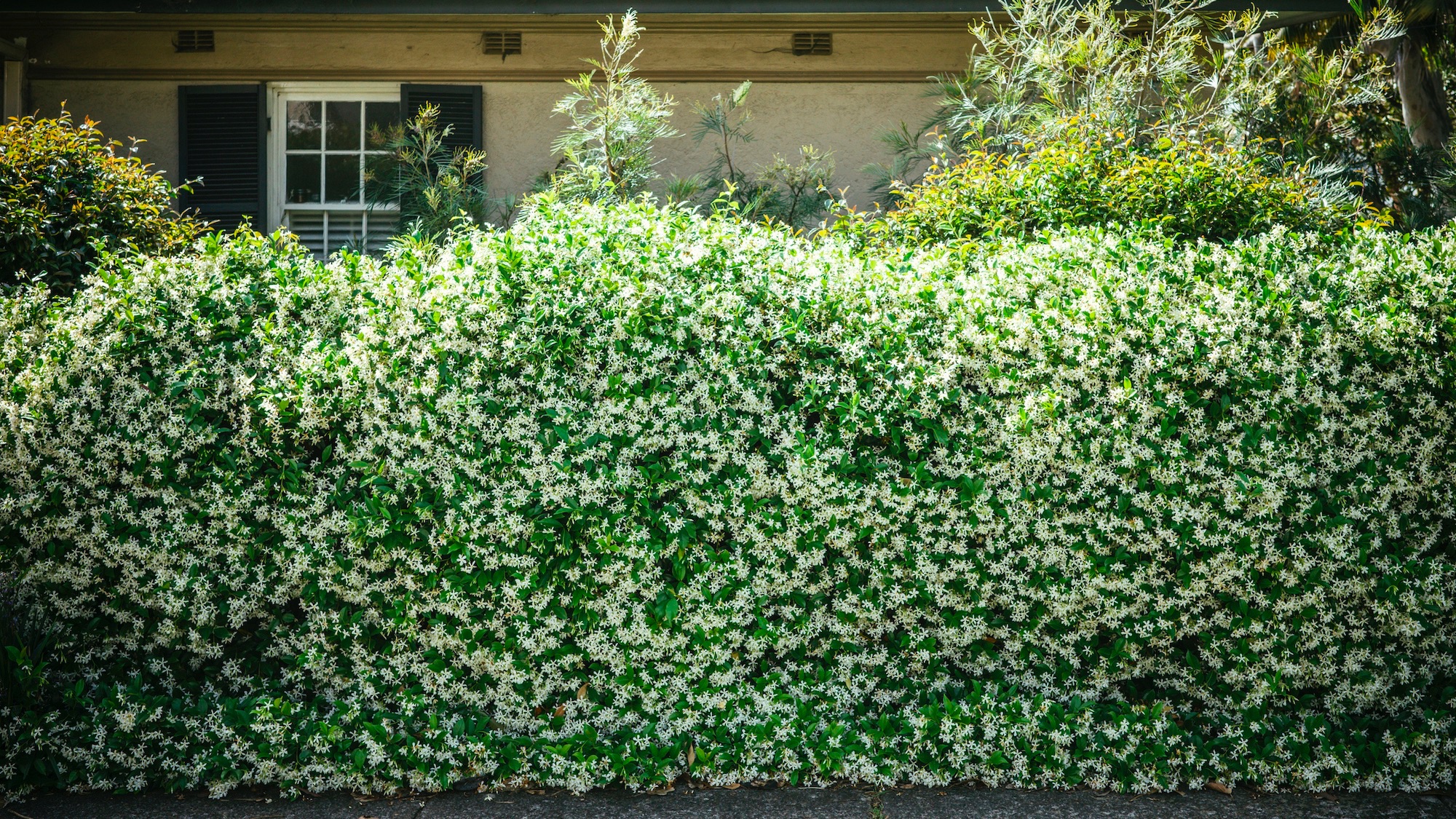Gadgets
How to build a living fence

A living fence is more than just a line of greenery—it’s a sustainable, living boundary that evolves with your landscape. Unlike traditional wood or vinyl fences, living fences are made from plants that grow, shift with the seasons, and contribute to a healthy ecosystem. As interest in eco-conscious landscaping grows, more homeowners turn to living fences for privacy, beauty, and biodiversity.
Why choose a living fence?
From reducing environmental impacts to fostering local wildlife, living fences offer green and practical benefits. “Living fences offer a cooling effect, unlike the heat-absorbing properties of wood and vinyl,” says Linda Vater, gardening expert for the Southern Living Plant Collection. “They help absorb sound and offer a natural, aesthetically pleasing alternative to artificial fencing materials.”
Beyond their good looks, living fences play a critical role in environmental health. “The foliage can help to filter dust and pollutants from the air, while the root systems help stabilize soil, prevent erosion, and runoff,” Vater explains. “Finally, living fences can provide food and shelter for wildlife.”
They also function as effective windbreaks and sound buffers, making outdoor spaces more comfortable. When well cared for, a living fence can last for decades and, unlike traditional fences, it repairs and renews itself over time.
Choosing the right plants for your fence
Plant selection is key to the success of a living fence. Consider your gardening zone, the amount of sunlight available, and the level of maintenance you’re willing to do. Vater warns that common mistakes are choosing plants unsuited to the local climate or selecting deciduous varieties that lose their leaves in winter, defeating the goal of year-round privacy. However, for gardeners in colder climates, evergreen options may be limited. In these cases, certain deciduous shrubs and trees can still be effective choices. Even without foliage, their dense branching patterns can provide a degree of screening while adding structural interest and texture to the winter landscape. Thoughtful placement and layering with other plant types, such as ornamental grasses or conifers, can enhance privacy and maintain visual appeal throughout the year.
Popular evergreen options like arborvitae, especially slender types such as Forever Goldy Arborvitae, offer height without taking up much space. “This means they can grow tall to provide privacy or wind protection without spreading too wide,” says Vater.
Other great picks include:
- Cleyera: Cultivars like Bronze Beauty are upright and compact, with colorful foliage.
- Loropetalum: Compact varieties such as Purple Diamond Semi-dwarf Loropetalum add vibrant color without overwhelming small spaces.
- For Wildlife: Serviceberry, elderberry, and dogwood provide food and shelter.
- Edible Options: Blueberries, hazelnuts, or even espaliered fruit trees double as food sources and privacy screens.
Planning and design tips
Before you plant, determine your fence’s purpose: Is it for privacy? A property boundary? Wind protection? Or simply decorative? These goals will influence plant choice, spacing, and layout.
For tight spaces or HOA restrictions, Vater recommends shrubs with naturally neat growth habits, which reduce the need for pruning while maintaining a tidy appearance. Also consider:
- Spacing and Height: Know your plant’s mature size to avoid overcrowding or gaps.
- Formal vs. Naturalistic Design: Decide if you want a crisp hedge or a wild, mixed border.
- Regulations: Check with local ordinances or HOA guidelines before planting.
How to build a living fence: step-by-step
- Mark and Prepare the Area
Begin by carefully measuring your intended fence line to determine the number of plants needed and ensure an even layout. Use string, stakes, or spray paint to clearly mark the planting area. Remove all existing weeds, grass, and debris to reduce competition for nutrients and water. If the soil is compacted or poorly drained, consider amending it with compost or sand to improve structure and drainage. Proper site preparation lays the foundation for healthy plant establishment and long-term success.
- Amend the Soil
Before planting, enrich the soil by mixing in organic matter such as compost or well-rotted manure to improve texture, aeration, and nutrient availability. Incorporating a balanced, slow-release fertilizer can also provide essential nutrients during the early stages of plant development. The goal is to create a fertile, well-draining environment that supports strong root establishment. Always consider the specific needs of the plants you are installing—some species may require soil with particular pH levels or nutrient balances. Conducting a soil test beforehand can help guide your amendment choices.
- Planting Design
Choose between staggered or straight-row planting designs depending on the desired style and function of your living fence. Staggered rows create a fuller, more natural look and provide better screening, while straight rows offer a clean, formal appearance that may suit structured landscapes. Regardless of the design, ensure each plant has adequate root spacing to promote healthy growth, prevent overcrowding, and reduce competition for water and nutrients over time.
- Initial Planting
Dig planting holes twice as wide as the root ball and just as deep to give roots room to spread and establish easily in the surrounding soil. Loosen compacted soil around the edges to encourage root penetration and healthy development. After placing the plant in the hole, backfill it with soil and gently firm it to eliminate air pockets. Water thoroughly when planting to help settle the soil and reduce transplant shock. To help retain moisture, regulate soil temperature, and suppress weeds, apply a 2- to 3-inch layer of mulch around the base of the plant, ensuring it is a few inches away from the stem or trunk.
If your plants are young or top-heavy and vulnerable to wind or shifting, use stakes for support. Make sure the ties are loose enough to avoid damaging the stem but secure enough to keep the plant upright as it grows.
Pruning is crucial for promoting dense, healthy growth and maintaining the shape of your living fence. Regular trimming helps control height and width, enhances air circulation, and encourages branching for a fuller appearance. Different pruning techniques, such as espalier and woven methods, can be used to shape your fence according to your desired look.
It’s important to research the specific pruning needs of your plant species as different plants respond differently to pruning. Follow the best practices recommended by growers, horticultural experts, or local extension services to avoid damaging the plant and promote vigorous growth.
For ongoing care, stay on top of watering, annual pruning, and pest monitoring. Choose plant varieties known for their resilience to local pests and diseases to maintain dense and uniform foliage. Consider investing in larger specimens or fast-growing species to accelerate the growth process, and use temporary screens like trellises with vines while permanent shrubs mature.
Living fences are more than just decorative features – they are long-term investments in ecological health and landscape function. With proper care and planning, they provide privacy, beauty, and essential habitat for wildlife. Whether framing a backyard, creating a natural enclosure for a patio, or buffering a street view, a living fence adds character and purpose to your space, growing more resilient and rewarding over time. Please provide an alternative version.
-

 Destination8 months ago
Destination8 months agoSingapore Airlines CEO set to join board of Air India, BA News, BA
-

 Breaking News9 months ago
Breaking News9 months agoCroatia to reintroduce compulsory military draft as regional tensions soar
-

 Tech News11 months ago
Tech News11 months agoBangladeshi police agents accused of selling citizens’ personal information on Telegram
-

 Breaking News9 months ago
Breaking News9 months agoBangladesh crisis: Refaat Ahmed sworn in as Bangladesh’s new chief justice
-

 Productivity11 months ago
Productivity11 months agoHow Your Contact Center Can Become A Customer Engagement Center
-

 Toys11 months ago
Toys11 months ago15 of the Best Trike & Tricycles Mums Recommend
-

 Guides & Tips9 months ago
Guides & Tips9 months agoHave Unlimited Korean Food at MANY Unlimited Topokki!
-

 Gadgets3 months ago
Gadgets3 months agoSupernatural Season 16 Revival News, Cast, Plot and Release Date
























